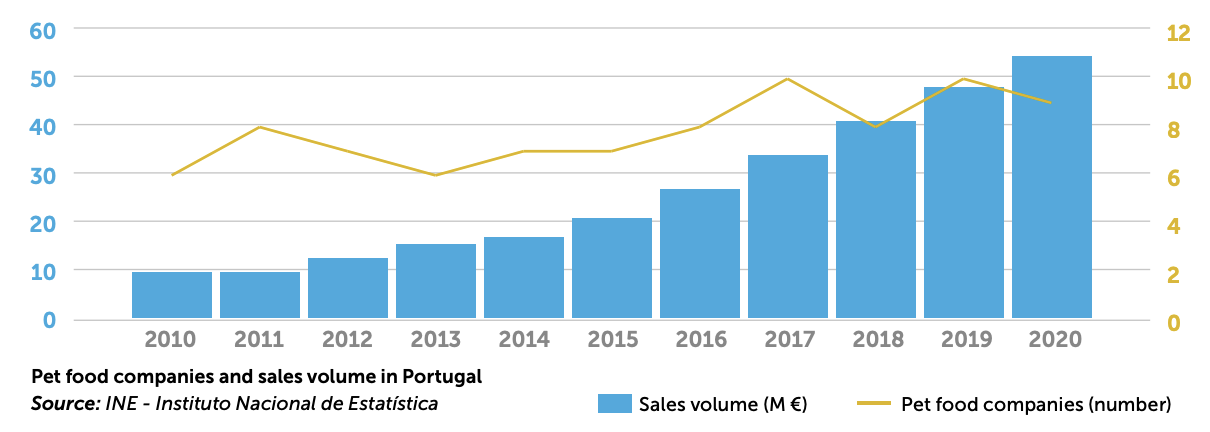The Portuguese pet industry: an overview

With a population of 2,080,000 dogs and 1,500,000 cats, Portugal is a pet-loving country. Where is the industry now, and how has it been doing during the COVID-19 pandemic?
In 2020, 38% of households in Portugal owned a dog and 32% of households were cat owners. The 9 top pet food companies in Portugal represent an annual sales volume of approximately €54.2 million ($61.3M), which is a 470% increase compared to 2010. In the past year, annual production was around 178 thousand tons*, representing almost 4% of the total production of animal feed in Portugal. (*Ton = metric ton = 1,000 kilo = 2,204,62 lbs.)
There is a clear growth trend in the production and supply of pet food. That is expected to continue, encouraging local manufacturers to replace imports as much as possible by domestic production and the use of locally produced raw materials.
Imports & exports
Portugal imports about 199 thousand tons of pet food (dog and cat), mainly from Spain (64%) but also from France, Italy, and the UK. With an average purchase price of around €941/ton ($1,065), the country spends approximately €187 million ($212M) per year on the total import of pet food.
But Portugal doesn’t only import. From January to December 2020, it exported a total of 165 thousand tons of pet food (dog, cat, and other domestic species), mainly to Spain (64%) and also to Georgia and Morocco. With an average price of about €567/ton ($642), total export value is approximately €94 million ($106).
Although exports are expected to increase in the coming years, it is uncertain how things will unfold with the supply chain issues the industry is facing.
Impact of Covid-19
2021 was marked by the continuation of the COVID-19 pandemic, and by new lockdowns that restricted the way the sector operates.
The pandemic has boosted the number of pet adoptions, which will likely give the pet food market a boost too. But at the same time, there have been dramatic increases in the price of vital raw materials, additives, vitamins, and most ingredients – in some cases by 60-80%. This, together with worsening freight, energy and fuel prices, has clearly delayed post-pandemic recovery. One of the problems is that certain imported raw materials, i.e. sweet potato, cassava, fats, and protein have been in short supply and more expensive.
Another constraint is the lack of packaging materials, like plastics, aluminum, and cardboard – as much of this is sourced from Asia. Production of dog and cat food even came to a complete halt for a while because of this.
Outlook
Despite all the difficulties mentioned, and the influence of some protectionist markets – like Brazil and Russia – that make trade agreements more difficult, the industry has continued to function.
Worldwide, the pet food market is projected to register a compound annual growth rate of 4.8% in the period between 2016 and 2026. Portuguese companies are committed to serve an increasing number of highend and premium segments, as some consumers are prepared to spend more on pet food that is healthy and nutritious. But most people in the country can still only afford cheaper products.
